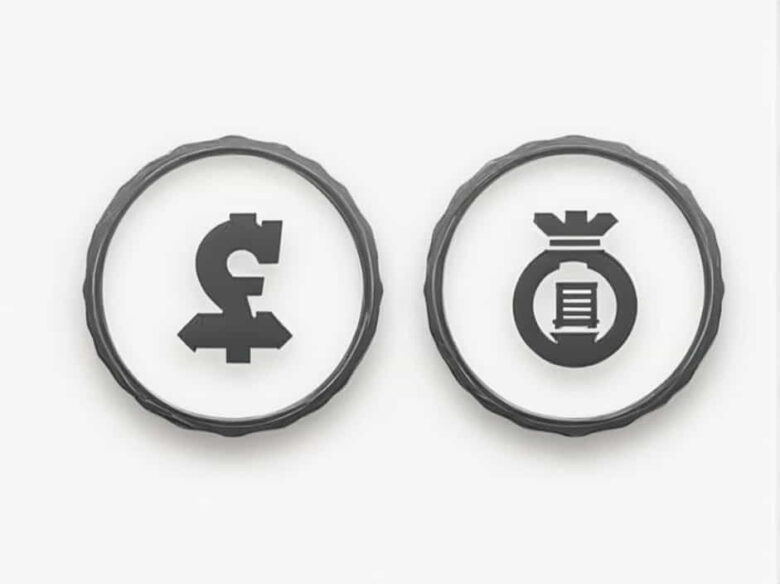Gross Domestic Product (GDP) is a crucial indicator used to measure a countrys economic performance. It represents the total value of all goods and services produced within a nation’s borders over a specific time period. To gain a clearer picture of economic growth and compare different time periods, economists use two main types of GDP: Nominal GDP and Real GDP.
While both metrics are essential, they serve different purposes. Nominal GDP measures the value of production at current prices, while Real GDP adjusts for inflation, providing a more accurate reflection of economic growth over time.
This content explains the formulas of Real GDP and Nominal GDP, highlights their differences, and discusses their significance in economic analysis.
What Is Nominal GDP?
Definition of Nominal GDP
Nominal GDP is the total market value of all final goods and services produced in a country within a specific period, measured using current prices during that time. It does not account for inflation or deflation, which means price changes directly impact the figure.
Formula for Nominal GDP
The basic formula for Nominal GDP is:
Where:
- P_t = Price of goods and services in the current year
- Q_t = Quantity of goods and services produced in the current year
This formula simply multiplies the quantity of each good or service produced by its current market price and sums the results.
Example of Nominal GDP Calculation
Imagine a simple economy that produces only two goods: books and pens.
- In 2023:
- Books: 500 units at $10 each ? $5,000
- Pens: 1,000 units at $2 each ? $2,000
The Nominal GDP for 2023 would be:
If in 2024, the prices increase to $12 per book and $2.50 per pen (with the same quantities), the Nominal GDP would be:
The rise in GDP here reflects both quantity and price changes.
What Is Real GDP?
Definition of Real GDP
Real GDP adjusts Nominal GDP for inflation, reflecting the true value of goods and services produced. It shows whether a countrys economy is genuinely growing by holding prices constant over time.
Formula for Real GDP
The formula for Real GDP is:
Where:
- Nominal GDP = GDP at current prices
- GDP Deflator = Price index that measures changes in prices over time (Base year index = 100)
Alternatively, Real GDP can be calculated using constant base year prices:
Where:
- P_{text{base}} = Price of goods and services in the base year
- Q_t = Quantity of goods and services produced in the current year
Example of Real GDP Calculation
Using the same example:
- Base year prices: Books at $10, Pens at $2
- Quantities in 2024: 500 books and 1,000 pens
Real GDP for 2024 would be:
Even though the Nominal GDP was $8,500 in 2024, the Real GDP remains at $7,000, indicating that the increase was due to inflation, not higher production.
Key Differences Between Real GDP and Nominal GDP
| Aspect | Nominal GDP | Real GDP |
|---|---|---|
| Price Consideration | Uses current market prices | Uses constant base year prices |
| Inflation Impact | Includes effects of inflation and deflation | Excludes inflation, showing actual growth |
| Purpose | Measures economic output at current prices | Analyzes true economic growth over time |
| Best Use Case | Comparing current market value | Tracking long-term economic growth |
Why This Difference Matters
- Policy Decisions: Governments and central banks use Real GDP to assess economic health and make decisions on interest rates and fiscal policies.
- Inflation Tracking: By comparing Nominal and Real GDP, economists can calculate the inflation rate.
- Standardized Comparisons: Real GDP allows accurate year-over-year economic comparisons.
GDP Deflator: The Bridge Between Nominal and Real GDP
What Is the GDP Deflator?
The GDP Deflator is an index that reflects the price changes of all goods and services included in GDP. It measures inflation within the economy.
GDP Deflator Formula:
Example of Using the GDP Deflator:
If:
- Nominal GDP = $8,500
- Real GDP = $7,000
Then:
This means prices increased by 21.4% since the base year.
The Importance of Real GDP and Nominal GDP in Economic Analysis
1. Measuring Inflation and Economic Growth
- Nominal GDP might suggest economic growth when prices rise, even if production remains unchanged.
- Real GDP filters out inflation, offering a clearer view of actual economic performance.
2. Comparing Economies Over Time
Real GDP allows for accurate comparisons across years. For instance, a countrys economy might seem to have doubled in size based on Nominal GDP, but Real GDP could reveal that the growth was purely due to inflation.
3. Informing Government Policy
Central banks often use Real GDP data to make decisions about interest rates and monetary policy. A shrinking Real GDP may prompt efforts to stimulate the economy, while rapid growth might lead to policies aimed at controlling inflation.
Common Challenges in GDP Measurement
1. Inflation Volatility
Sudden price spikes or drops can distort Nominal GDP, making Real GDP the more reliable measure for economic trends.
2. Selection of Base Year
Choosing an outdated base year can misrepresent Real GDP. Economists periodically update the base year to reflect modern economic conditions.
3. Exclusion of Non-Market Transactions
Both Real and Nominal GDP exclude informal economy activities (like unreported labor or barter transactions), potentially underestimating a countrys actual productivity.
Understanding the formulas and differences between Real GDP and Nominal GDP is essential for accurately evaluating a countrys economic health. While Nominal GDP reflects the economy’s current value at prevailing prices, Real GDP strips away the effects of inflation, offering a clearer view of true growth.
By using both metrics, economists, policymakers, and businesses can make informed decisions, track economic progress, and design strategies that align with actual market conditions. Whether you’re studying economics, analyzing market trends, or simply trying to understand financial news, knowing how to calculate and interpret GDP is a vital skill.



